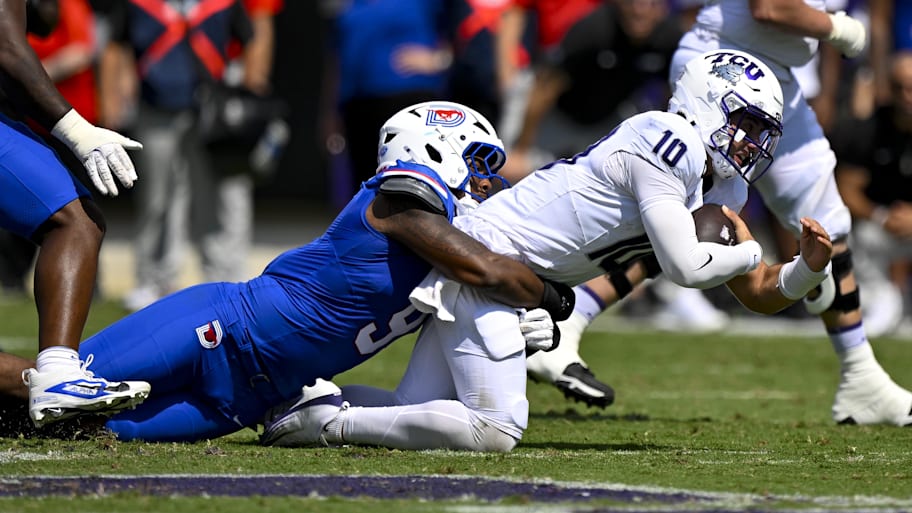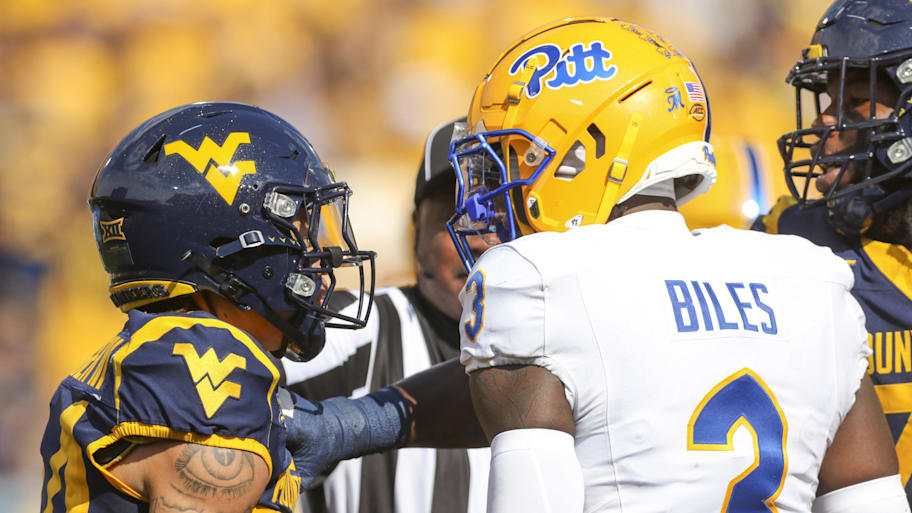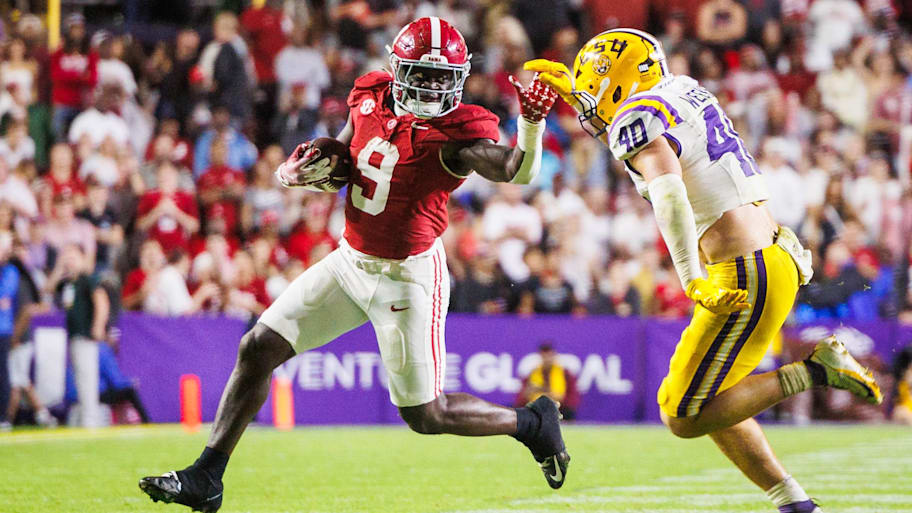Forty names, games, teams and minutiae making news in college football, where the refs aren’t catching all the shenanigans in the SEC and the ACC. First Quarter: It Was All a Lie. Second Quarter: Reexamining the Quarterback Recruiting Class of 2022.
Third Quarter: The Perils of Rivalry Preservation
On Monday, the Southeastern Conference rolled out the first tier of its plans for a nine-game league schedule starting in 2026, announcing each of the 16 teams’ three permanent opponents. (The other six will rotate annually.) This task comes with a high degree of difficulty. Fans care deeply, and they’re predisposed to asserting that their favorite team is getting screwed while someone else gets an advantage.
Give credit where due: The SEC largely did a great job preserving most of its historic rivalries while also seeking competitive balance. And it must be noted that in a “three-plus-six” scheduling format, all SEC teams will play each other regularly, instead of the divisional era when, for instance, Georgia and Texas A&M met once since the Aggies joined the league in 2012.
All things considered, this is about as fair a plan as possible for a 16-team conference with 90 years of history to consider. But the key words there are “16-team conference.”
What realignment has created comes with a cost in terms of rivalries lost. Or at least interrupted. This is the price college football chose to pay while hurting the Big 12, crippling the Pac-12 and making other decisions in pursuit of TV revenue.
Fans didn’t choose it. Campus leaders, conference bosses and TV execs chose it for them. They chose an 11 p.m. ET kickoff for Michigan State at USC, and a 9 a.m. PT kickoff for Oregon at Northwestern, and ACC games in the Bay Area. And they also chose to imperil the matchups many fans care about most.
Among those that will no longer be annual games in the SEC: LSU-Florida (21), which has been played every year since 1971, often been nationally relevant and just as often been deeply weird. (There were hurricane disputes in the 2010s, a clock controversy in 1989 and a thrown cleat that altered the course of the entire 2020 season.)
Tennessee (22) lost annual matchups with Florida (which it has played every year since 1990) and Georgia (every year since ’92). The Volunteers won’t miss the Bulldogs, who have beaten them nine straight times and 14 out of the last 16.
But the biggest loss from the annual SEC rotation is LSU-Alabama (23). The two powers have met every year since 1964, often with a path to the national championship at stake. (They played once in the national championship game itself, a rematch from the regular season that helped spur progress to a four-team playoff.) For much of Nick Saban’s tenure with the Crimson Tide, their star-studded clashes on the first Saturday of November was the most important rivalry in the sport.
The problem: The Tide has the Iron Bowl battle with Auburn and the October matchup with Tennessee, which has been played 107 times dating back to 1901. Giving Bama a third heavyweight matchup on a yearly basis, while other programs have an easier route, would have been a tough sell in Tuscaloosa, Ala. Instead, the SEC preserved the Alabama–Mississippi State matchup, which also is defensible—they’re the SEC’s two closest schools in terms of proximity, and they’ve played 108 times.
With that as a backdrop, a look at the state of other rivalries that have been imperiled by realignment and/or changing league schedules:
The Battle for the Iron Skillet (24)

Combatants: TCU and SMU, in a Dallas-Fort Worth Metroplex grudge match. Series: TCU leads, 54–43–7. For much of that time, one or both programs were bad. And at one point SMU had no program, taking a two-year “death penalty” for rampant NCAA cheating. But the Horned Frogs made the 2022 College Football Playoff and the Mustangs made the 12-team version last year.
Last meeting: Saturday, when the Frogs won 35–24. Next: There is none, as of now. No games are scheduled between the two. TCU’s Sonny Dykes, who has coached on both sides of the rivalry, wasn’t crazy about continuing the series. SMU might end up feeling the same, when the ACC goes to nine league games.
Notre Dame–USC (25)
Series: Notre Dame leads, 52–38–5. The last great intersectional annual rivalry. With a combined 15 consensus national champions since the AP poll era began in 1936, this game has often had a profound impact on the sport.
Last meeting: The Fighting Irish won, 49–35, in Los Angeles last season. Next: Oct. 18 in South Bend. After that: Nov. 28, 2026, at USC. That’s the last one currently scheduled, which has created outrage among fans of both schools and college football in general.
There were reports in August that USC wants to extend the series for “multiple years,” but that could mean as few as two. That’s insufficient commitment. The Trojans seem particularly reluctant to make a Midwest trip for a nonconference game in the middle of the cross-country Big Ten grind, preferring to move the game to the front part of the schedule. Whatever it takes to preserve the rivalry, but all that travel was something USC willingly signed up for, not something that was forced upon it.
Border War (26)

Combatants: Kansas and Missouri, in a rivalry that dates back to 1891 on the field but off the field dates back to a band of Confederate raiders out of Missouri burning Lawrence, Kans., to the ground during the Civil War. Whoopsie. Series: Missouri leads, 57–55–9.
Last meeting: Sept. 6, when the Tigers rallied for a 42–31 win in Columbia, Mo., after a 14-year hiatus. Next: Sept. 12, 2026, in Lawrence. The two also have on-campus games scheduled for 2031 to ’32. This should be a locked-in yearly game along the lines of the SEC-ACC rivalry matchups, even with the SEC going to nine league games. It provides both teams with a 10th power-conference opponent while giving the fans what they want.
Bedlam Series (27)
Combatants: Oklahoma and Oklahoma State, in a multisport grudge match that originally got its name from the wrestling rivalry. Series: Oklahoma leads, 91–20–7. It’s historically lopsided but means a lot in the state.
Last meeting: Nov. 4, 2023, when the Cowboys beat the Sooners, 27–24, in Stillwater, Okla. If only Mike Gundy had ridden off into the sunset right then … Next: Nothing scheduled, and both programs look booked through 2029 at least. (The two did manage to play in men’s basketball last season, and other sports.) With new athletic department leadership incoming at Oklahoma and perhaps at Oklahoma State, the task of putting this rivalry back together again will fall to new principals.
The Backyard Brawl (28)

Combatants: Pittsburgh and West Virginia, in a border battle that dates to the 1800s. Between 1917 and 2011, the only years they didn’t play were during World War II. Then the Panthers joined the ACC and the Mountaineers moved to the Big 12 and everything went to hell for a decade-plus before a reunion in 2022. Series: Pitt leads, 63–42–3.
Last meeting: West Virginia won earlier this month, 31–24. Next: The game goes off the schedule from 2026 to ’28, then returns from ’29 to ’36. Hopefully USC and Notre Dame are taking notes on the proper length of a series extension.
Apple Cup and Civil War (29)
Combatants: Washington vs. Washington State and Oregon vs. Oregon State, respectively. The Pacific Northwest neighbors have been playing each other since 1900 (Apple Cup) and 1894 (Civil War). Series: Washington leads the former, 77–34–6; Oregon leads the latter, 70–49–10.
Last meetings: Saturday. The Huskies beat the Cougars, 59–24, and the Ducks beat the Beavers, 41–7. The blowouts underscore that even if these rivalries continue, it’s in a zombified state after Washington and Oregon moved to the Big Ten and essentially left Washington State and Oregon State for dead as power-conference outliers. There will be a dwindling level of competitiveness. Next: The Apple Cup is scheduled through 2028; Oregon and Oregon State will not play next year, but reportedly are close to an agreement to play from 2027 to ’32.
The ACC-SEC rivalries (30)
Combatants: Florida vs. Florida State; Georgia vs. Georgia Tech; South Carolina vs. Clemson; and Kentucky vs. Louisville. Series: Florida leads, 38–28–2; Georgia leads, 72–41–5; Clemson leads, 73–44–4; and Kentucky leads, 20–16.
These rivalry games are all expected to continue, but the move earlier this month by the SEC to nine conference games and the ACC’s similar move Monday could add some tension if any of the involved programs want to schedule additional power-conference opponents. They’ll either go to 11 such games, or something will have to give here. Hopefully it doesn’t, because these Thanksgiving week games are annual highlights in those states.
More College Football on Sports Illustrated
Listen to SI’s new college sports podcast, Others Receiving Votes, below or on Apple and Spotify. Watch the show on SI’s YouTube channel.
This article was originally published on www.si.com as Forde-Yard Dash: Dropping Alabama-LSU Heavyweight Clash Is Most Painful Rivalry Loss.
